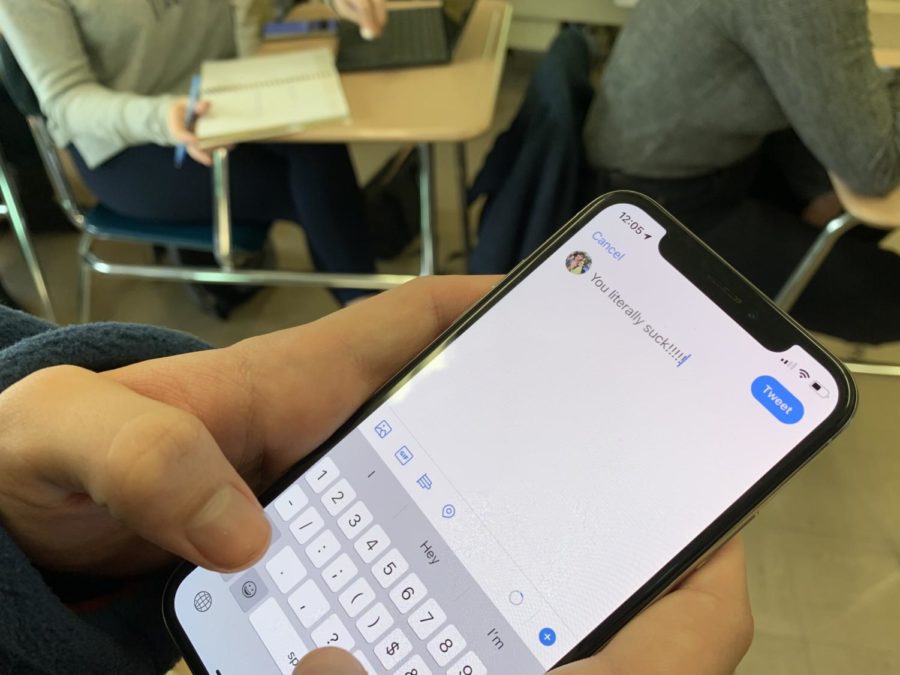Let me be direct — cyberbullying education needs a new focus
A student posting an indirect message to an unsuspecting victim on Twitter.
In gym class we watched the movie “Cyberbully,” and to be quite honest, I didn’t see the appeal. I was wondering why we even bothered watching the 2011 film, which focused on the verbal harassment which a girl in high school faced from classmates online. Honestly, I don’t think this kind of cyberbullying exists anymore.
With the rise and fall of social media platforms like MySpace, the internet is a very different place than it used to be. Instagram, Twitter and Snapchat are primarily the focus of today’s online frenzy.
The one thing I see missing from these platforms? Constant harassment and direct bullying.
No one on Instagram or Snapchat is getting directly harassed by a bunch of kids unless you’re a social media influencer or celebrity. People are no longer afraid to post things online because they don’t have to worry that someone will literally comment “ugly” or “loser”. However, cyberbullying is still very much alive in social media.
Bullying has taken new forms online. Private stories on Snapchat restrict the number of people who can view your profile, making it much easier to exclude people. Instagram “finstas” can prevent people from following them, and can be rude to unsuspecting victims. What Twitter, Instagram and Snapchat all use, however, are indirect posts.
If you have “beef” with someone, you post an indirect. An indirect is a rude caption to a picture or post that doesn’t use the name of the person to whom it is referring. This is the new forefront of cyberbullying.
The movie “Cyberbully” would have been useful 10 years ago but not today. In my gym class, everyone agreed that the way the movie presented cyberbullying was not accurate. I do believe our schools should update the way we talk about cyberbullying and the way we handle it.
As someone who’s handled their fair share of bullying, I can say that I’ve never been verbally harassed online, yet the programs and videos we emphasize in school always showcase of people being harassed by tons of kids online.
I feel that we should be talking about online inclusivity instead of the obvious online harassment that has become such a small concern. Bullying online is now seen as a crime, where as when the movie “Cyberbully” came out, it was never seen as a serious offense. This is exactly why people no longer bully their victims directly online.
The original stereotype of cyberbullying does not exist anymore, but who is to say that it doesn’t exist at all? It does, but not to the extreme extent seen in the video. Instead, the sneaky and disrespectful indirect bullying plagues the online world.
Our schools should update the way we handle cyberbullying. It may be a daunting task, as most teens who post indirect messages don’t reveal their victims, but we should also concentrate on online positivity. All in all, the internet needs a break from the negativity, so next time you think of posting an indirect, don’t.
It’s not like anyone would know what you’re trying to say, anyways.


